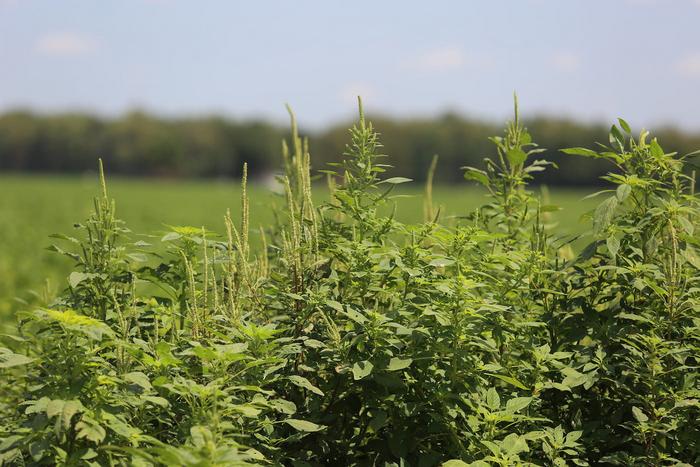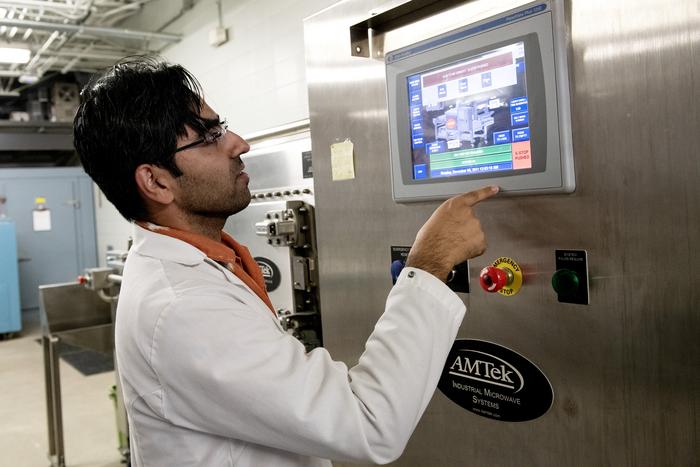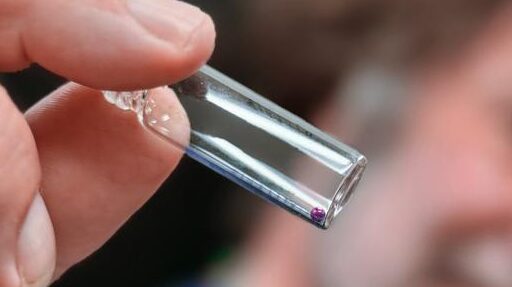From University of Arkansas System Division of Agriculture 29/05/24. Title by Superinnovators.

FAYETTEVILLE, Ark. — It’s not just for burritos and popcorn.
Microwave technology is also being tested as a new tool to destroy weed seeds and decrease herbicide use.
Scientists and engineers with the Arkansas Agricultural Experiment Station are investigating the use of 915 MHz microwaves to neutralize a variety of weed seeds underground.
The study is supported by a nearly $300,000 Agriculture and Food Research Initiative grant from the U.S. Department of Agriculture’s National Institute of Food and Agriculture, with additional support from The Cotton Board and Cotton Incorporated.
“Even if we can reduce the seed bank by only 50 percent, that would be a lot because the reduction in weed density would greatly increase the efficacy of herbicides and eventually reduce herbicide use,” said Nilda Burgos, professor of weed physiology and molecular biology and principal investigator of the study.
“It will be another tool for integrated weed management that is sustainable and non-chemical.”
While studies have shown that burning is very effective at destroying weed seeds, the resulting smoke causes problems with air quality and road visibility.
Weed seed crushers are also effective but do not do anything on seeds already dropped, or buried, in the soil.
However, the microwave frequency that will be used in the study, which is much lower than that in a home microwave oven, can penetrate below the soil surface to reach weed seeds.
Preliminary studies on 915 MHz frequency microwaves to control weedy rice were conducted by Kaushik Luthra, food science post-doctoral fellow, and Griffiths Atungulu, associate professor and agricultural engineer for grain processing and post-harvest system engineer.
Atungulu, co-principal investigator of the new study, is also director of the Arkansas Rice Processing Program and began looking at microwave technology a couple of years ago upon request from Arkansas farmer Chris Isbell of Isbell Farms, who sought non-chemical solutions to problematic weeds.
Similar to a high-frequency home microwave popping popcorn, the low-frequency 915 MHz microwaves also interact with the water molecules inside and on the surface of the weed seeds but penetrate deeper in the soil than high-frequency microwaves can.
“The water molecules constantly try to align with the change in polarity of the microwaves, creating resistance and heat,” Luthra said.
“The temperature rises, and the embryo of the seed is destroyed.”
The preliminary studies using low-frequency microwaves inactivated seeds from weedy rice at a 3.5-inch depth and made them mostly inactive at a 6-inch depth.
Beneficial microbes recovered quickly after the treatment, a critical component that prompted further studies with the research arm of the University of Arkansas System Division of Agriculture.

Beneficial microbes, including fungi, help plants absorb nutrients and help degrade herbicides in the soil.
Although the new study focuses on weeds common in cotton fields, the 10 weeds in the study are also common in other major commodity crops.
Amaranthus palmeri, commonly known as Palmer pigweed or Palmer amaranth, will be one of the weed seeds pitted against microwaves.
According to the U.S. Department of Agriculture, this prolific pigweed can lead to yield losses up to 91 percent in corn and 79 percent in soybeans by outcompeting the crop.
The microwave technology does not discriminate between herbicide-resistant and susceptible weeds; therefore, it is a valuable tool for combatting herbicide-resistant weeds and for reducing weed problems in organic crop production.
In addition to microwave technology, the two-year study will evaluate the effect of a plant-growth regulator to assist herbicide activity on reducing weed fertility and seed germination.
Researchers will also look at soil adjuvants, which are additives that can theoretically extend the longevity of pre-emergent herbicides.
The study will evaluate the effect of soil adjuvants on herbicide residual activity on fall-planted crops.
Burgos will examine the various treatments for these broadleaf weeds: Palmer pigweed, prickly sida, common lambsquarter, ivyleaf morningglory, common ragweed and spurred anoda.
She will also evaluate the treatments on grass weeds including barnyardgrass, goosegrass, Texas panicum and Italian ryegrass.
The Rice Processing Program developed microwave technology for high-throughput rice drying and conducted a study to evaluate the 915 MHz microwave frequency’s effect on weedy rice.
Burgos said the current study will research the microwave’s breadth of application.
Atungulu chose the frequency of 915 MHz because of its ability to penetrate deeper into the soil and apply heat more evenly, or volumetrically, compared to the 2,450 MHz microwave frequency used in home microwave ovens.
When researching microwaves to dry rice in a way that did not compromise grain structural integrity, Atungulu adopted the 915 MHz frequency used by industrial microwaves to thaw frozen meat.
With the ability to adjust the frequency, Atungulu and Burgos plan to study how different frequencies affect weed seeds in various soils and soil depths.

Good soils for growing rice have a hard clay pan to facilitate holding water and flooding.
However, cotton “does not like wet feet,” Burgos said, so ideal cotton soils have less clay and are well-drained.
The research aims to understand how microwave energy performs within the contrasting soil properties, Burgos added.
Isbell, Atungulu and his team envision using the PTO shaft on a tractor as the energy source for a weed seed-killing microwave implement.
The previous studies required 30 kilowatts of power from the 915 MHz microwave system to achieve maximum seed inactivation.
A 50-horsepower engine can generate 25 kilowatts of power.
Row-crop farmers typically have tractors with larger engines, from 85 to 410 horsepower.
Atungulu is seeking funds to build a prototype.
The USDA-NIFA grant number for this project is 2024-67014-41945.
More info
https://aaes.uada.edu/news/microwavedryer












